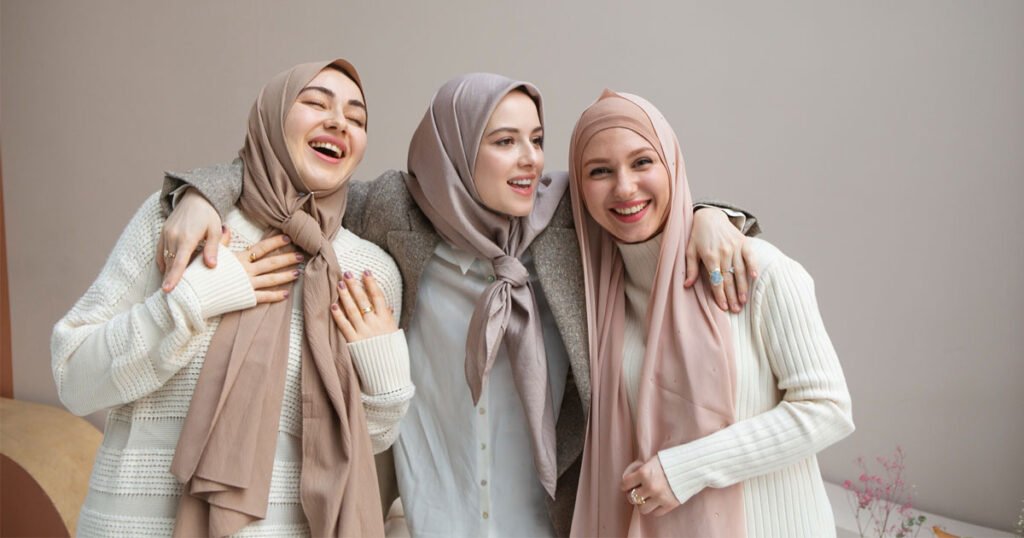Introduction
The concept of hijabhoojup is gaining attention in various sectors, sparking curiosity and discussion. Although it may not be a household term yet, it has significant implications in both cultural and societal contexts. It offers a unique blend of traditions, values, and practices, making it essential for those who seek to understand its meaning and impact.
This article provides an in-depth exploration of hijabhoojup, breaking down its core principles, benefits, and real-world applications. We will also discuss the challenges related to hijabhoojup and offer practical solutions to overcome them.
What is Hijabhoojup? A Detailed Explanation
Defining Hijabhoojup
It is a concept that encompasses both a cultural practice and a social philosophy. At its core, hijabhoojup represents a set of values or guidelines that dictate how individuals present themselves in society, often tied to traditions of modesty and respect. While the term itself may vary across different cultures, its core essence remains constant: a focus on maintaining dignity, self-expression, and social harmony. Visit us here for more details allenstoneware.
Key Elements of Hijabhoojup:
- Modesty in Appearance: It emphasizes clothing and self-presentation that reflect humility and self-respect.
- Cultural Representation: It serves as a form of cultural expression, honoring ancestral traditions.
- Community Respect: The practice is also reflects the importance of mutual respect within a community.
The Origins of Hijabhoojup
The origins of hijabhoojup trace back to ancient traditions where community values and personal dignity were paramount. Various cultures have different interpretations of hijabhoojup, with some communities emphasizing physical modesty, while others view it as a spiritual or philosophical practice.
Historical Context:
In many societies, it evolved as part of larger ethical or religious systems. For example, in certain Eastern traditions, it is linked to the idea of self-purification and inner peace, while in other parts of the world, it has ties to cultural identity and social roles.

The Importance of Hijabhoojup and Its Benefits
Social Cohesion and Respect
One of the most notable benefits of hijab is its role in promoting social cohesion. The practice encourages individuals to respect themselves and others, creating a society rooted in understanding and cooperation.
Example: Hijabhoojup in Multicultural Settings
In multicultural environments, hijab acts as a bridge between different cultural identities. By practicing hijab up, individuals can honor their cultural heritage while also contributing to the community’s diversity.
Personal Empowerment
Contrary to some misconceptions, it empowers individuals by allowing them to take control of how they present themselves to the world. For many, it becomes a way to express self-confidence and autonomy while maintaining alignment with their values.
Empowerment Through Choice:
Those who practice hijabhoojup often see it as a form of personal freedom. By choosing how to dress and behave in a way that reflects their beliefs, they gain a sense of empowerment and authenticity.
Preservation of Cultural Identity
It serves as a significant tool for preserving cultural heritage. In an increasingly globalized world, where cultural identities can be diluted, it allows individuals to stay connected to their roots.
Real-World Example: Hijabhoojup in Global Diasporas
In many diaspora communities, hijabhoojup provides a means of maintaining a connection to one’s homeland. It helps to pass down cultural values to younger generations, ensuring that traditions are preserved across borders.
Applications and Use Cases of Hijabhoojup
Hijabhoojup in Fashion
In the fashion world, it has had a profound impact, giving rise to the concept of modest fashion. Designers and brands are now catering to those who value both style and modesty, creating clothing lines that reflect the principles of hijab.
Case Study: Modest Fashion Brands
Several international fashion houses have embraced it by creating modest clothing collections that appeal to diverse audiences. These designs are stylish while adhering to cultural norms, offering women a way to express themselves without compromising their values.
Hijabhoojup in Education
The concept of hijabhoojup can also be applied in educational settings, particularly when teaching cultural sensitivity and respect for diversity. Schools and institutions that embrace it as part of their curriculum often see an increase in cultural awareness and mutual respect among students.
Example: Educational Programs
Several schools have introduced hijabhoojup-themed workshops to promote cultural understanding. These programs encourage students to learn about different cultural practices, fostering a more inclusive environment.
Hijabhoojup in Professional Settings
It is also making its mark in the workplace, especially in industries where professionalism and self-presentation are important. Companies are beginning to understand that allowing employees to practice hijab up creates a more inclusive and respectful work culture.
Real-World Example: Corporate Inclusivity Initiatives
Many multinational companies are now offering employees the freedom to express their cultural identities through clothing and behavior, reflecting the principles of hijabhoojup. This shift has led to greater employee satisfaction and increased retention rates.
Challenges and Misconceptions About Hijabhoojup
Misconceptions About Hijabhoojup
One of the biggest challenges surrounding hijab is the misunderstanding of its meaning. Some believe that hijabhoojup is restrictive or outdated, associating it with limiting personal freedom. However, this view fails to recognize the empowerment and autonomy that hijabhoojup can offer.
Solution: Educating the Public
By providing accurate information and fostering discussions about hijabhoojup, these misconceptions can be addressed. Educational initiatives in schools, workplaces, and online platforms can help shed light on the true meaning of its empowering nature.
Balancing Tradition and Modernity
Another challenge is finding a balance between upholding traditional values and adapting to the modern world. Some individuals struggle with practicing hijabhoojup in a society that may prioritize different values or standards of behavior.
Solution: Adaptation and Flexibility
It does not have to be rigid. It can evolve and adapt to modern contexts, allowing individuals to stay connected to their cultural heritage while navigating contemporary life. This flexibility helps ensure that remains relevant in today’s society.
Inclusivity in Diverse Communities
In multicultural communities, there can be challenges in ensuring that is inclusive of different interpretations. Some may feel excluded or pressured to conform to a specific way of practicing hijabhoojup.
Solution: Encouraging Diverse Expressions
To make hijab hooj up more inclusive, it is essential to acknowledge and celebrate the diversity within the practice. By allowing multiple interpretations and expressions of hijabhoojup, communities can foster greater understanding and inclusivity.
Conclusion
Hijabhoojup is more than just a cultural practice—it is a philosophy that promotes dignity, respect, and personal empowerment. Its relevance spans across fashion, education, professional environments, and more, offering individuals a way to stay true to their values while navigating an increasingly globalized world.
By embracing hijab, individuals and communities can foster social harmony, preserve cultural heritage, and promote inclusivity. Despite challenges and misconceptions, hijabhoojup continues to be a source of empowerment and connection for many people around the world.



